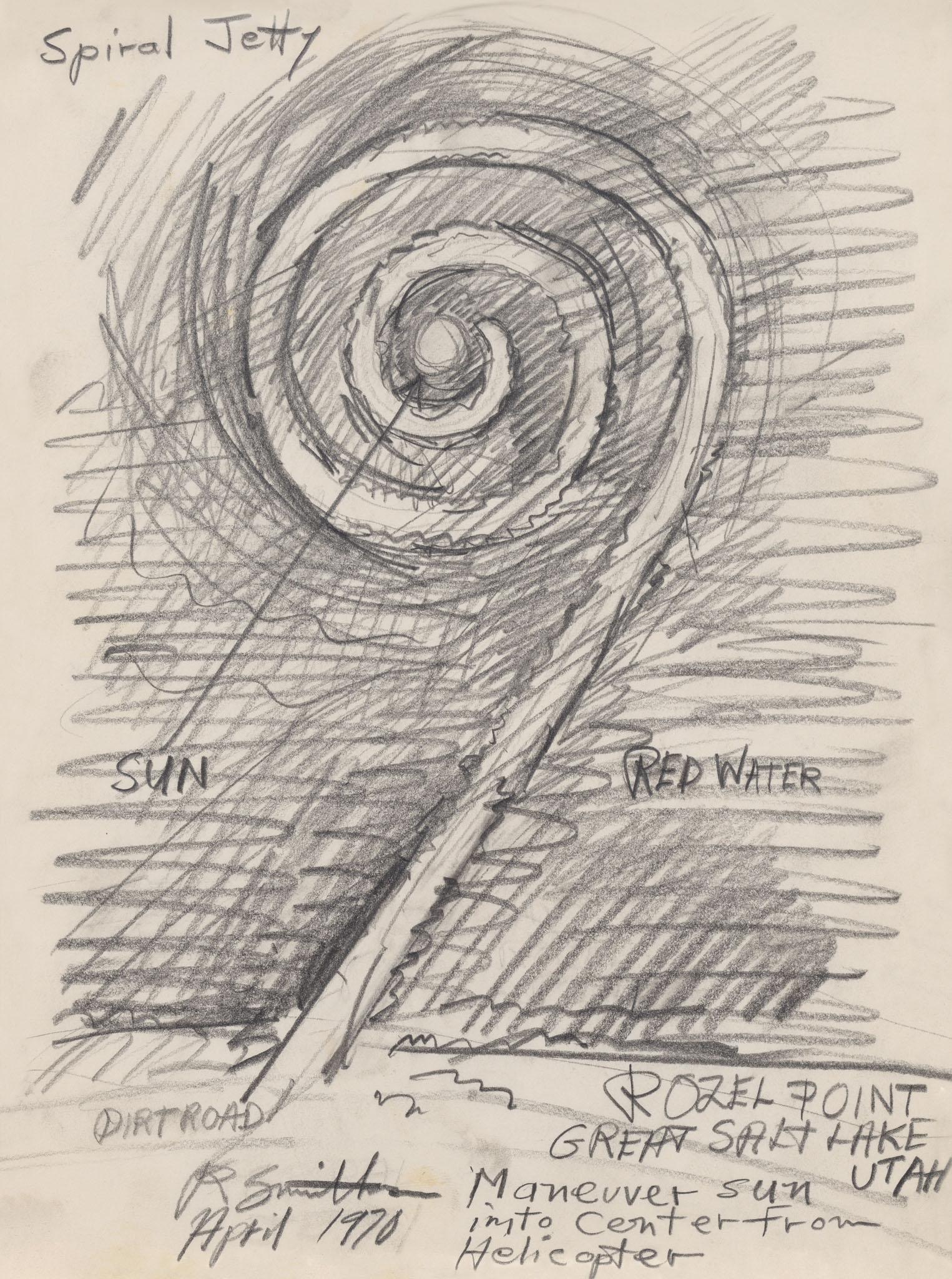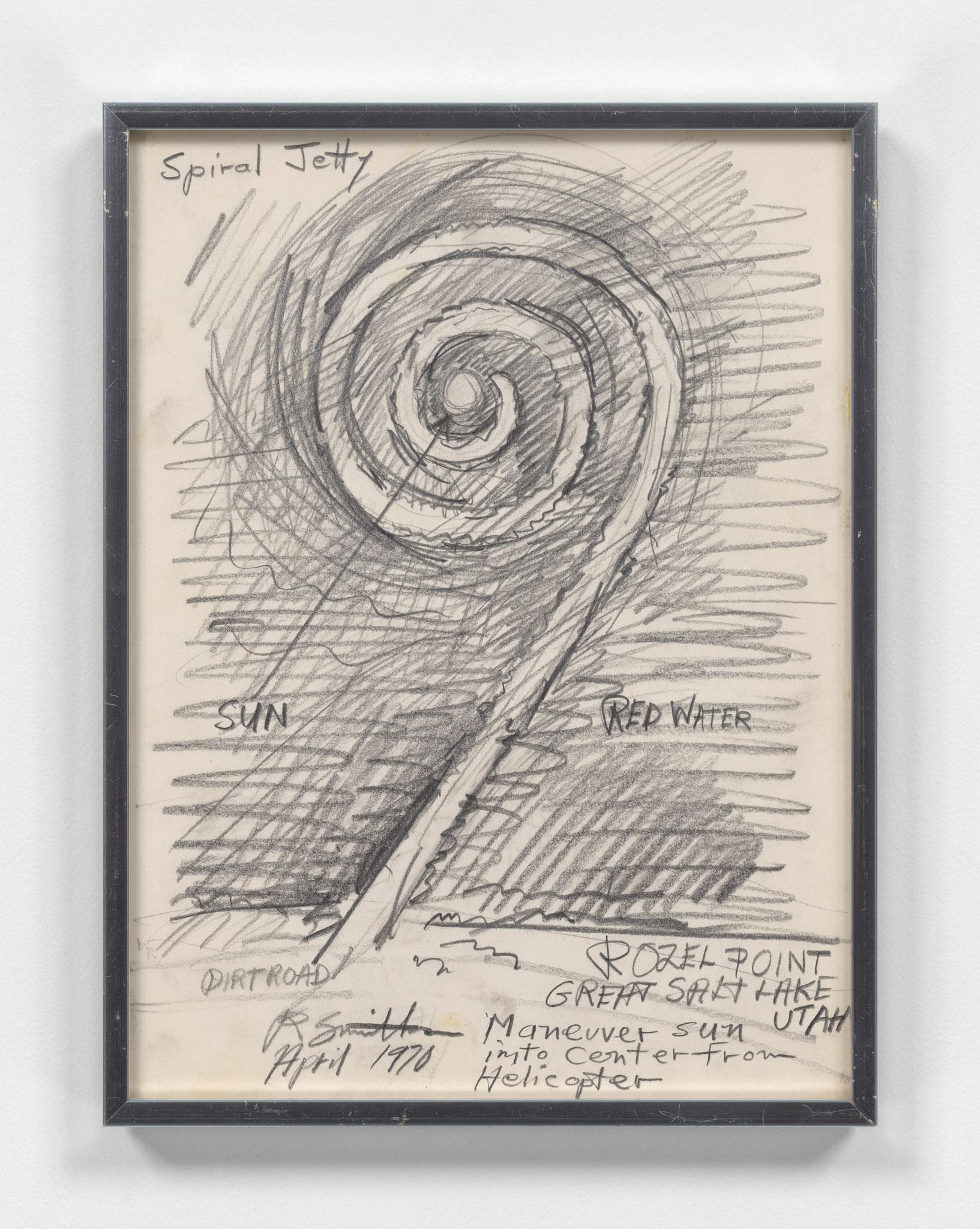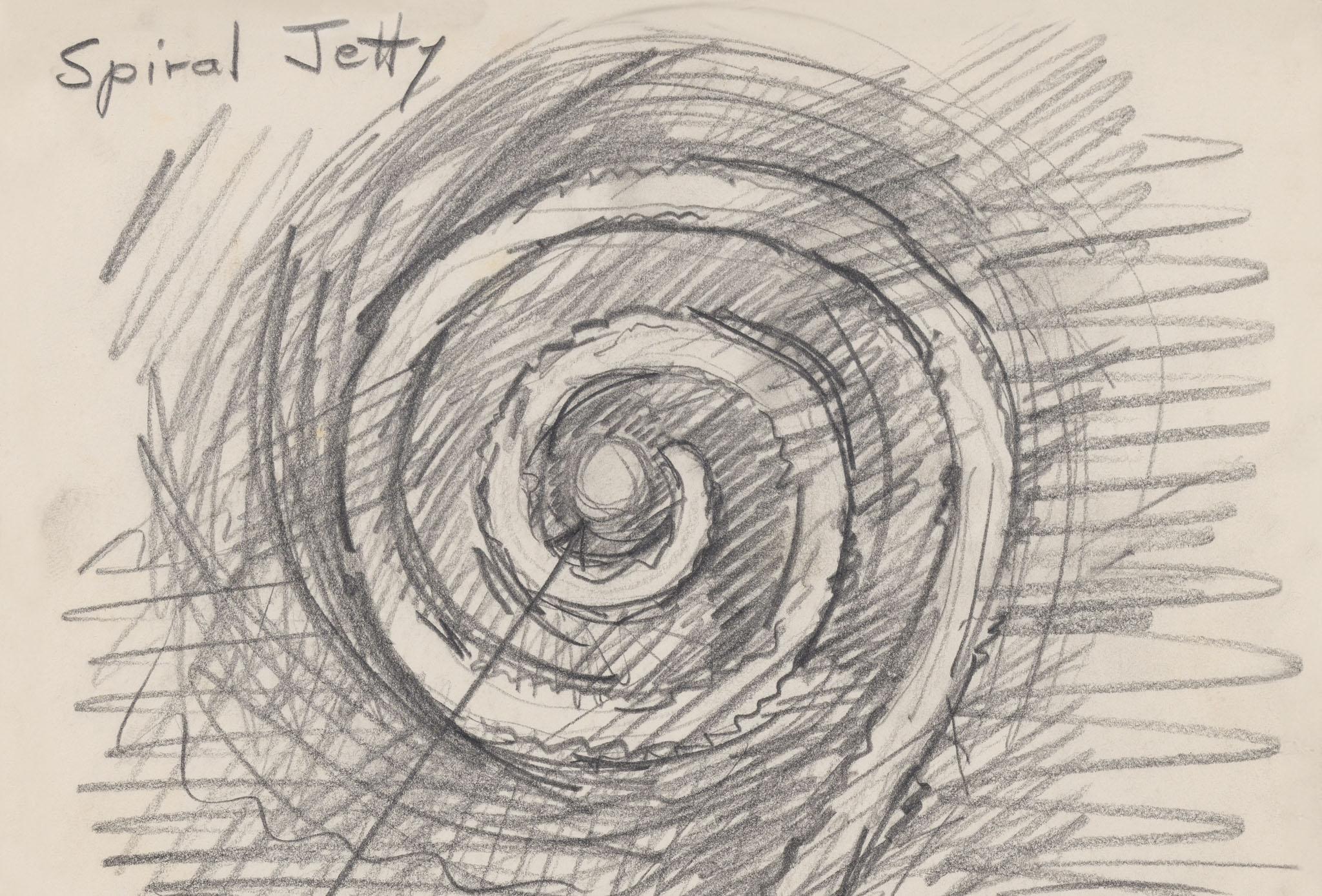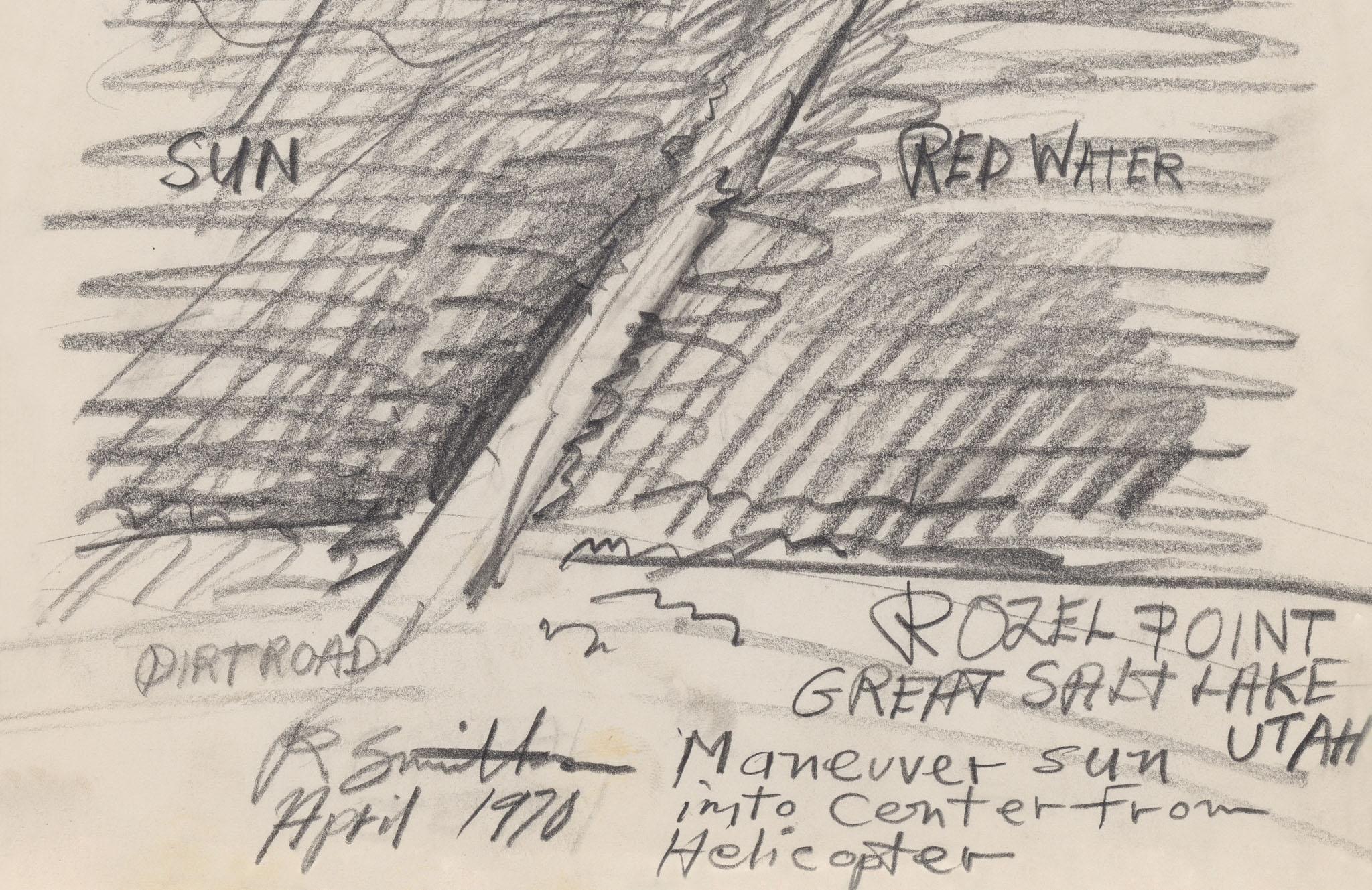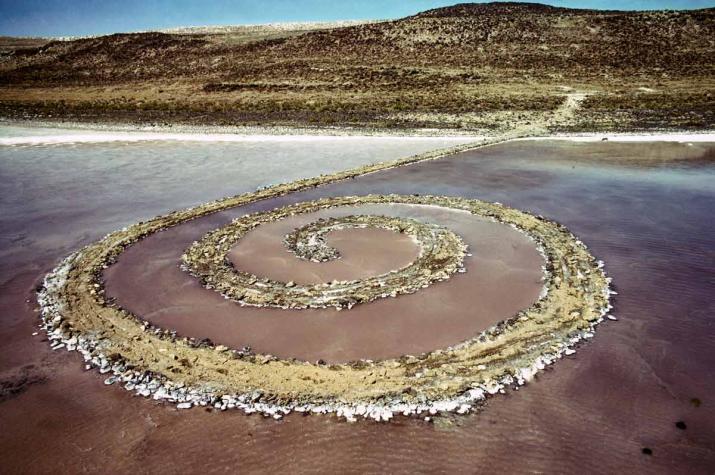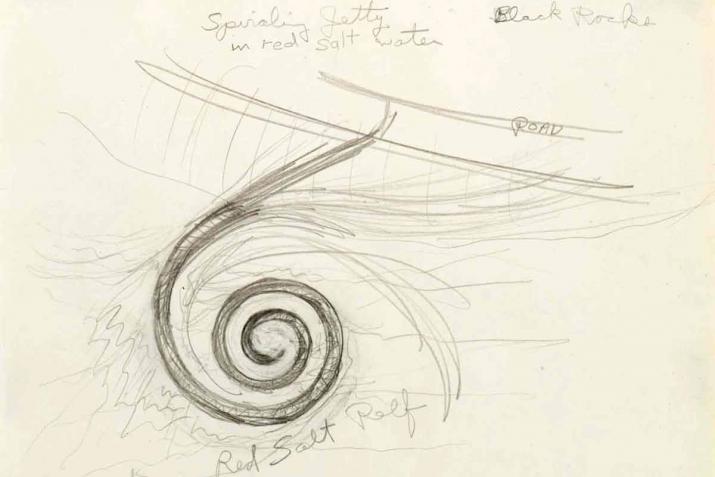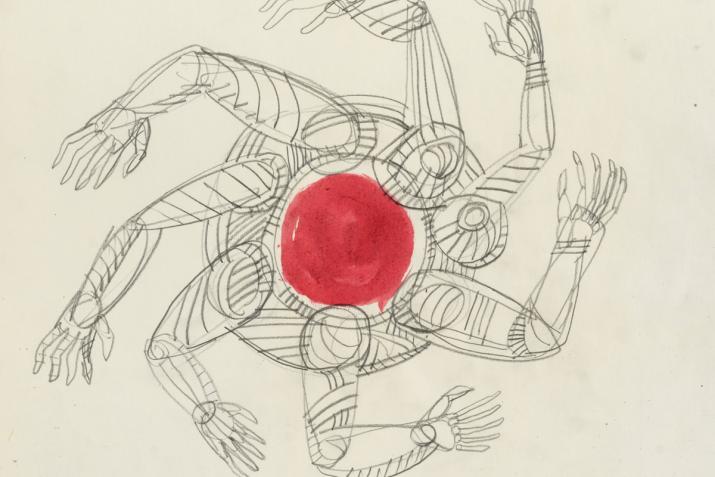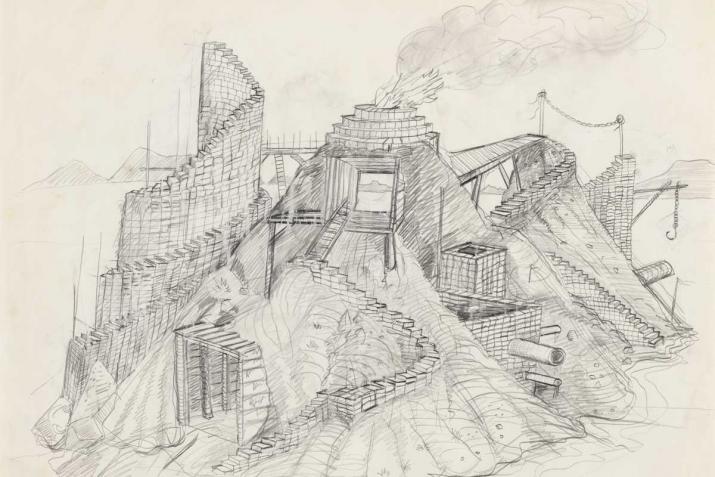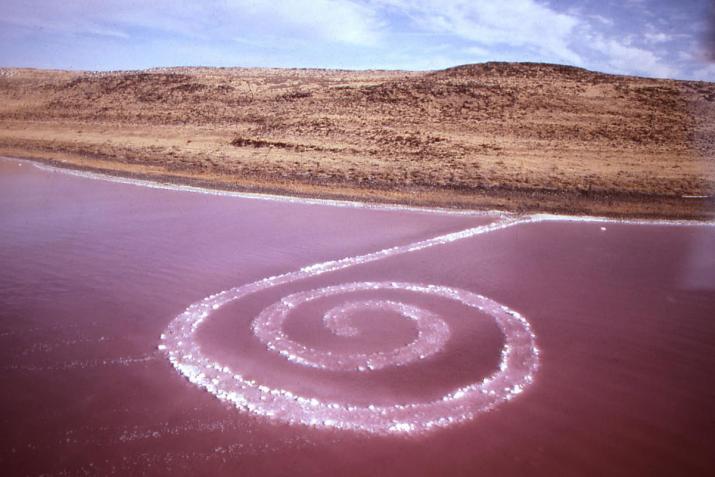
Spiral Jetty with Sun
Spiral Jetty with Sun is both a drawing of Smithson's iconic earthwork Spiral Jetty and an illustration mapping out his intentions for a specific sequence filmed from a helicopter for the film Spiral Jetty. When Smithson first visited the site of the earthwork at Rozel Point on Utah’s Great Salt Lake he experienced a powerful mirage, later describing in the Spiral Jetty essay that the “shoreline became the edge of the sun, a boiling curve, an explosion rising into a fiery prominence. Matter collapsing into the lake mirrored in the shape of a spiral.“ In the Spiral Jetty film Smithson set out to capture this visceral experience of the site and the earthwork through shifting aerial shots filmed from a looping helicopter. “The helicopter maneuvered the sun’s reflection through the Spiral Jetty until it reached the center. The water functioned as a vast thermal mirror. From that position the flaming reflection suggested the ion source of a cyclotron that extended into a spiral of collapsed matter.” Executed in Smithson’s characteristic energetic cross-hatching, the mark-making in Spiral Jetty with Sun reflects the chaotic disorientation and recalibration that takes place during the aerial footage at the end of the Spiral Jetty film.
